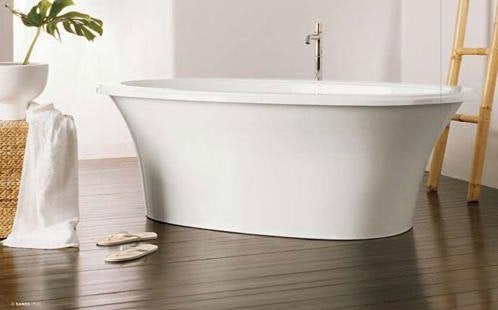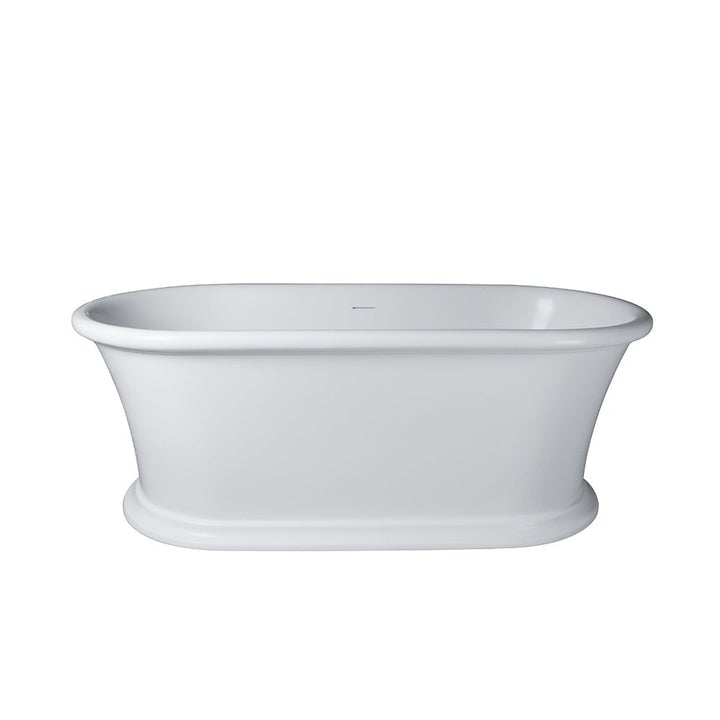Each person maintains their personal idea about Installing A Bathtub.

Setting up a bathtub isn't precisely brain surgery, but it does need strong plumbing, woodworking, and often, tiling abilities. Replacing an old tub with a brand-new one is additionally a reasonably difficult job. If the old bathtub is conveniently accessible, the job can relocate quickly; if you need to open up a wall to remove the old tub as well as place the brand-new bath tub, the job is a lot harder. In either instance, the task is within a home handyman's skills, although you will need an assistant to vacate the old bathtub and also embeded in the brand-new one. Make sure you have actually qualified yourself for the job and are comfortable attempting it. Instead of working with a contractor to take over a halfway-completed project, it is better to consider utilizing one before you begin. Possibilities are you may need an expert plumber to make tube links.
This post will certainly aid you install a new tub in your shower room if you have actually currently acquired a brand-new tub and don't need to change the plan of your previous water system pipelines.
Your devices and also product list need to comprise the following:
Removing Old Taps
If you need to replace old taps with new ones as a part of your installation, then the first thing you should do is disconnect the water. After doing so, activate the taps to drain any type of water staying in the system. The process of eliminating the existing taps can be quite problematic because of the restricted access that is often the case.
Make use of a container wrench (crowsfoot spanner) or a faucet tool to undo the nut that attaches the supply pipelines to the taps. Have a towel all set for the staying water that will originate from the pipes. As soon as the supply pipelines have been removed, make use of the exact same tool to loosen up the nut that holds the taps onto the bath/basin. You will certainly require to stop the single faucets from transforming during this process. As soon as the faucets have been removed, the holes in the bath/basin will have to be cleaned up of any kind of old securing compound.
Prior to proceeding to fit the brand-new faucets, contrast the pipe links on the old taps to the brand-new taps. If the old faucets are longer than the new taps, after that a shank adapter is required for the brand-new taps to fit.
Fitting New Touches
If the tails of the new faucets are plastic, then you will need a plastic connector to avoid damage to the string. One end of the connector fits on the plastic tail of the faucet and the various other end offers a link to the existing supply pipes.
If you need to fit a monobloc, after that you will need lowering couplers, which connects the 10mm pipeline of the monobloc to the basic 15mm supply pipeline.
Next, place the tap in the installing hole in the bath/basin making sure that the washers remain in place between the faucet and the sink. Protect the faucet in place with the supplier given backnut. When the faucet is safely in place, the supply pipelines can be connected to the tails of the faucets. The taps can either be attached by using corrugated copper piping or with typical tap ports. The former kind should be linked to the tap finishes first, tightening up just by hand. The supply pipes can later on be linked to the various other end. Tighten both ends with a spanner after both ends have actually been connected.
Setting up the Tub
Making use of both wood boards under its feet, put the bath tub in the needed placement. The wooden boards are helpful in equally spreading the weight of the tub over the area of the boards rather than focusing all the weight onto four tiny points.
The following goal is to make sure that the bathtub is leveled all round. This can be accomplished by examining the spirit level and also adjusting the feet on the tub till the spirit level checks out degree.
To install taps, fit all-time low of the outermost flexible tap connector to the suitable supply pipeline by making a compression join; then do the very same for the other tap.
Activate the supply of water as well as examine all joints and new pipework for leakages and tighten them if required. Load the bath tub and likewise examine the overflow outlet and also the normal outlet for leakages.
Lastly, deal with the bath paneling as described in the maker's instruction manual. Tiling and also securing around the bathtub ought to wait up until the bath tub has actually been used at least once as this will certainly resolve it right into its final position.
Getting ready for the Setup
First of all, the sustaining structure provided with the bath ought to be fitted (if needed) according to the maker's directions. Next off, fit the taps or mixer to the tub. When fitting the tap block, it is essential to ensure that if the faucet includes a plastic washing machine, it is fitted in between the bathroom and also the faucets. On a plastic bathroom, it is additionally reasonable to fit a supporting plate under the taps unit to prevent strain on the bathtub.
Fit the flexible tap connectors to the bottom of the two taps using 2 nuts and olives (sometimes supplied with the tub). Fit the plug-hole outlet by smearing mastic filler round the sink electrical outlet opening, and after that pass the outlet with the hole in the bath. Utilize the nut supplied by the manufacturer to fit the plug-hole. Examine the plug-hole electrical outlet for an inlet on the side for the overflow pipeline.
Next off, fit completion of the versatile overflow pipeline to the overflow outlet. After that, screw the pipe to the overflow face which should be fitted inside the bath. See to it you utilize all of the supplied washers.
Connect the catch to the bottom of the waste electrical outlet on the tub by winding the thread of the waste outlet with silicone mastic or PTFE tape, and screw on the catch to the electrical outlet. Attach the bottom of the overflow tube in a similar manner.The bath need to currently prepare to be fitted in its final position.
Tiling Around the Bath tub
In the location where the bath meets the tile, it is essential to secure the joins with a silicone rubber caulking. This is important as the fitting can relocate enough to crack a rigid seal, creating the water to permeate the wall in between the bathroom as well as the tiling, leading to difficulties with moisture and feasible leakages to the ceiling below.
You can pick from a range of coloured sealants to assimilate your components and installations. They are offered in tubes and cartridges, and also can sealing voids as much as a width of 3mm (1/8 inch). If you have a bigger space to fill, you can load it with spins of soaked paper or soft rope. Keep in mind to always fill the bath tub with water prior to sealing, to permit the movement experienced when the bathtub is in usage. The sealant can crack rather early if you do not take into account this motion prior to sealing.
Alternatively, ceramic coving or quadrant ceramic tiles can be made use of to border the bathroom or shower tray. Plastic strips of coving, which are easy to use and reduce to size, are additionally easily readily available on the market. It is advisable to fit the ceramic tiles making use of water-resistant or water-proof sticky and also grout.
Bathtub Installation
How Important Is A Bathtub To Your Home?
High-quality baths, showers, and other bathroom updates are necessary when considering a smart investment in your home. It’s a room that you go to every day and one that is constantly being used by guests.The bathroom is one of the top trafficked rooms in a home and also one of the most valuable in terms of home resale.
Install Piping Before Tub
You will be using your existing drain and waste vent system, but pipes required include the hot and cold water supply lines and a pipe leading to a shower head. A mixing valve and shower head are also needed. Air chambers may be required.
Position the Tub
Lower the tub into place so that the continuous flange fits against the wall studs and rests on 1’x4' or 2’x4' supports. Anchor the tub to the enclosure with nails or screws inserted through the flanges into the studs.
NOTE: Remember, bathtubs and shower stalls may require support framing. A bathtub filled with water is extremely heavy, so check building codes and framing support before installing the tub.
Assemble Drain Connections
Assemble the bathtub drain connections by connecting the tub overflow with the tub drain above the trap, not beyond it. The trap will have a compression fitting that screws over the arm of the overflow assembly.
Place a Pipe For the Shower Head
First, locate a brass female threaded winged fitting and attach it to a framing support via a screw or a nail. Then run a pipe up the wall for the shower head. Sweat or solder the other side of the brass fitting to the top of the pipe.
Attaching Hot and Cold Water Lines
Attach your water lines for both hot and cold by sweating these directly into the hot and cold ports of the mixing valve. The mixing valve will be how water enters the tub’s system, not by the pipes themselves.
Install the Spout
Extend a piece of 1/2 inch pipe, or whichever length is specified in the manufacturer’s instructions, for the tub spout. Sweat on a male threaded fitting at the end of the pipe or use a brass nipple of the proper length and a 1/2 inch cap.
NOTE: At this point you should have your rough-in plumbing work inspected before proceeding further.
Check For Leaks
Restore the water pressure and check the drain connection and the supply pipes for any sign of leaking.
estore the Bathroom Wall
Replace the wall with moisture-resistant drywall as a base for your wall covering. Seal the joints between the wall and your new tub with silicone caulk as protection against water seepage.
https://www.berkeys.com/2016/12/02/bathtub-installation-dallas/

I'm certainly very enthusiastic about A Step-by-Step Guide to Installing a Bathtub and I hope you liked my post. Do you know about someone else who is in to the subject? Why not promote it. Many thanks for going through it.
Visit